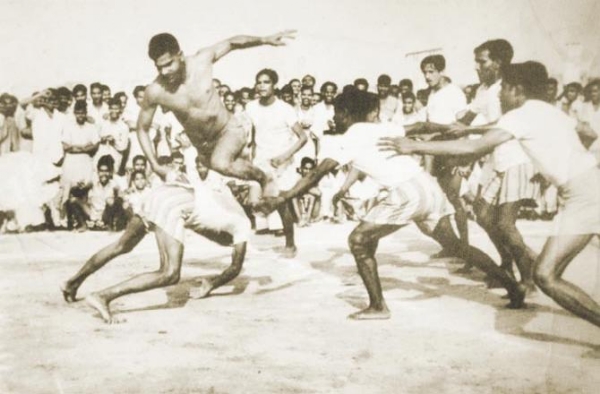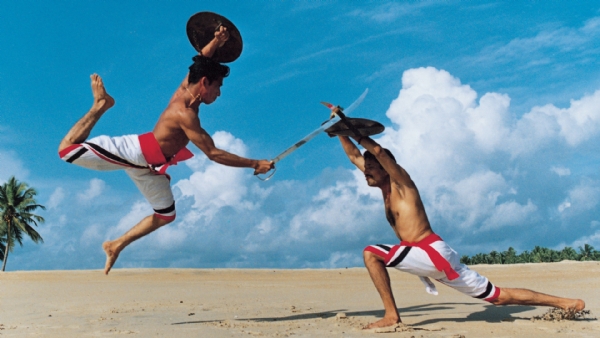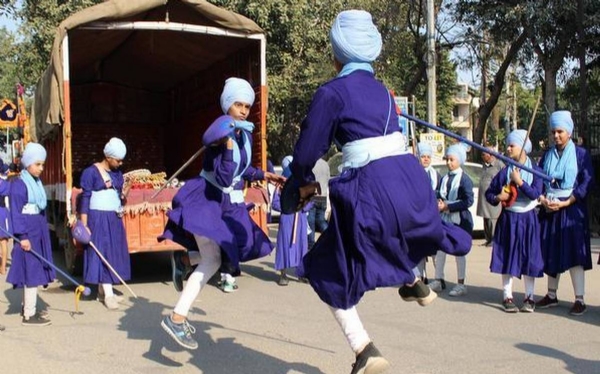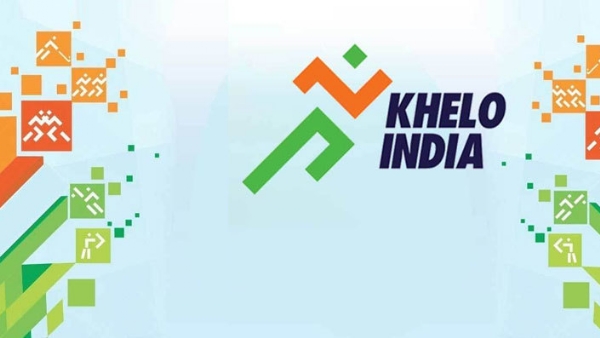The rise of India’s indigenous sports since Independence
14 Aug 2021 17:40:40
Last year in February, Kambala racer Srinivas Gowda became an overnight sensation covering 100 meters in just 9.55 seconds at a sporting event held at Aikala near Moodbidri, Karnataka. He was termed as Usain Bolt of Kambala as it was a spectacular feat achieved. This year, too, he created a new record by completing 100 meters in just 8.96 seconds. He was even offered to take proper training at Sports Authority of India (comes under Sports Ministry) for showcasing athletics skills in a regional sporting event. This sporting event is called the ‘Kambala’ buffalo race which is popular near Coastal Karnataka districts. Over 45 different villages in coastal Karnataka celebrate the Kambala race every year. Similarly, there are many such traditional/indigenous sports in India that can leave a mark in global sports.

There might have been several such incidents where individuals like Gowda would have displayed such performances in these traditional sports. And, India had been a nation of sportsmen and sportswomen long before the British decided to take over. According to history, the Indian sports is believed to be 8000 years old, from the time of Indus Valley civilization. From the Malla-Yuddha (an ancient Indian form of wrestling) to horse-back or elephant-back polo, the origins of many such sports can be traced back to our country. Depictions of sports are also found in our mythological epics like the Mahabharata and Ramayana, with Bhima and Lord Hanuman being portrayed as the greatest wrestlers of their time.
But as the centuries descended and we started getting influenced by western civilization, our sporting choices changed, thus resulting in sports like cricket, hockey, and football gaining attention from the masses. During the British rule in India, the Britishers went to any and every extent to tame the masses and made sure that these sports will not find a place in India even after Independence.
Most people fail to understand that these traditional sports are very much similar to Olympic sports that involve hundreds of nations. For e.g. Fencing. There are many indigenous sports in India that are similar to fencing. These sports include Indian martial arts that have been practiced for thousands of years on a regional level.
1) Kalaripayattu

It is considered one of the oldest forms of martial arts around the world and has been developed around both the mental and physical energies of combat. The aim is to synchronize the mind and the body while using weapons such as daggers, arrows, swords, etc. The main usage is in one-on-one hand-to-hand combat which requires agility, flexibility, and coordination.
2) Gatka

Similarly, there are many such sports like Thang Tha, Mardani Khel and Silambam that have shades of fencing. If these sports find support, then it can be ultimately practiced all over the world and can have the tag of global sport, too.
Did you Know? - "Although Badminton had its origin in England, it is in India that the modern form of Badminton was evolved. The game got its modern form in the garrison city of Poona in the 1860s. In fact, it was popularly known as ‘Poona‘ itself when it was played by the Britishers."
The Change
For e.g. the IPL model. This model is not only financially rewarding but also a huge fan gatherer. It was thus not surprising to see other organizers applying the same strategy to monetize the respective sports. Though this might be seen as business, it does have the capability to gain attraction from every corner of India. The Pro Kabaddi League (PKL) is one of the biggest examples of this strategy.
Did You Know? - "2019 saw India host the inaugural Mallakhamb World Championship, which was attended by 15 countries including the USA, Germany, Spain, Japan, England, etc. To add to the celebration of an Indian-origin sport being recognized as a competitive sport, India also lifted the coveted trophy at the end of the Championship. The popularity of Mallakhamb has been rising so steadily, that in 2013, the state of Madhya Pradesh declared Mallakhamb the official sport of the state."
All these have struck gold in terms of attracting crowds, thus the sponsors and ultimately the all-important money. Sports is the ultimate winner here, with the clubs providing all the necessary facilities for development of the youngsters. Moreover, the acquaintance with seasoned international stars also makes for a good learning curve for the young players.
Also, the spiced-up versions of the game can also bring forgotten sports back to the fore in the zip of a time. Take PKL for example. According to the Economic Times, the league that was formed in 2014 managed to attract as many as 397 million viewers in 2018. Although these sports have been practiced in many parts of the world for decades, it is competitions like these that will help the sport gain popularity and a fan base across the globe in the coming years.
The Efforts of Government
One recent and major development that took place in PM Narendra Modi's government was the inclusion of four indigenous sports in Khelo India. The Sports Ministry had approved the inclusion of four indigenous sports to be a part of the Khelo India Youth Games 2021, which was scheduled to be held in Haryana in 2021. The four new games are, Gatka, Kalaripayattu, Thang-Ta and Mallakhamba.
There have been countless initiatives laid down by the government. Among those initiatives, the Khelo India program and Fit India Movement has been very instrumental to gain the attraction of citizens. Fit India Movement is a program launched by Prime Minister Narendra Modi in August 2019 to make fitness an integral part of our daily lives. The induction of Kiren Rijiju as Sports Minister has been also helpful in promoting sports in India. He followed the progress of Indian sportspersons quite closely and made sure that he'd be the first one to wish them on their achievements.

Did You Know? - "The Indian government's flagship program, Target Olympics Podium Scheme (TOPS), which started in 2014, has yielded significant success for India in the last two years as it was used to its fullest potential. Today, 126 athletes/ teams from India are part of the TOPS scheme, and a majority of them have already qualified for the Tokyo Olympics in disciplines such as archery, boxing, wrestling, athletics, table tennis, hockey, and para-sports."
Similarly, there have been several such initiatives introduced by the government which was appreciated by many athletes as well as the public. On other hand, there is no denying the fact that sports like kabaddi and kho kho are beginning to unshackle themselves, but the country still has a long way to go to make space for traditional sports as the mainstream sports. And this must be supported by the viewers/audience, government, and public.
This will help the coming generation to acknowledge and respect the traditional custodians of our great land and promote the culture of sport and fitness in our country, where more than half of our population comprises those in an impressionable age.
If we are willing to be vocal about some of these local sports, it could add on to India’s contribution in the repertoire of the popular universal sports. Like Usain Bolt, we will have global sporting icons like Srinivas Gowda in these sports. India could aspire to be the sporting hub of the indigenous games in the world. Indigenous games could indeed be the game changer in Indian sport.